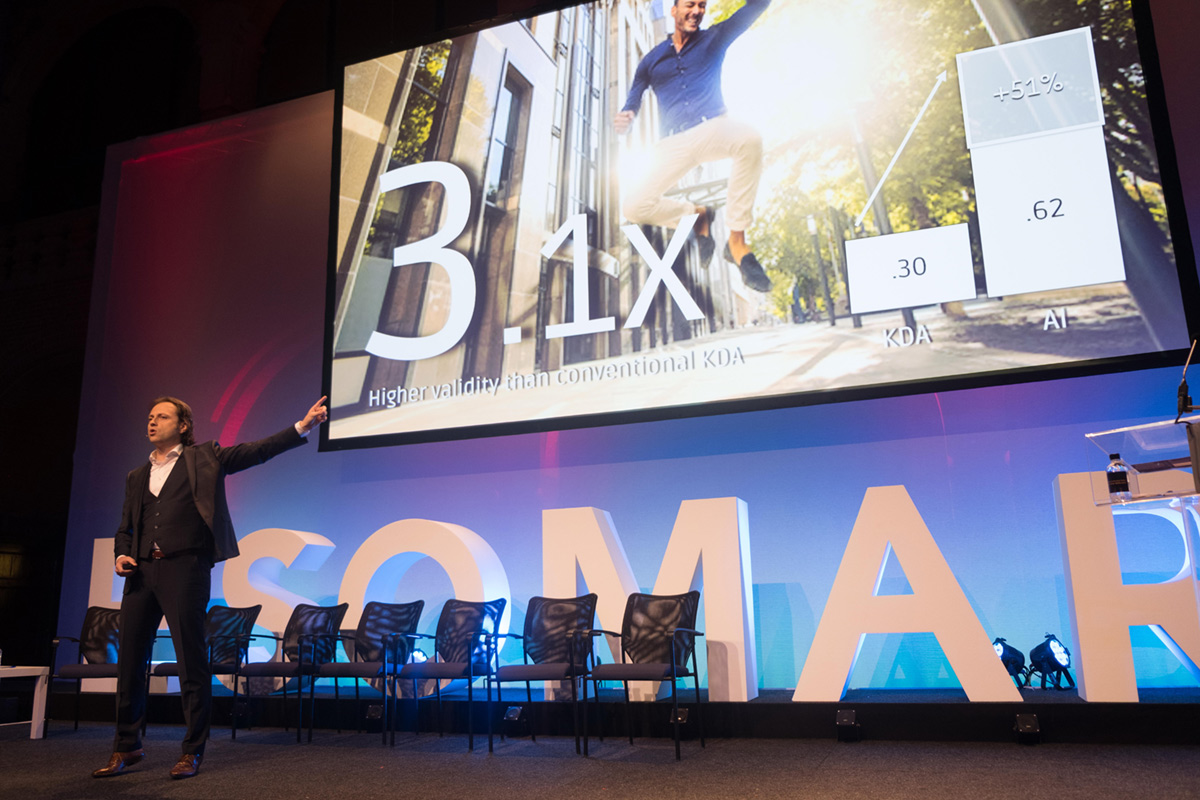
Creativity does not follow rules. Correct. However, if it wants to be successful, it needs clear guide rails – just as the creativity of architects is guided by the laws of statics. But what does actually work – “Celebs?”, “Voice over?”, “Which music?”, “Community or pleasure?”, “Problem or solution?” – There are hundreds of such questions to which we have now clear answers.
CONCRETE GUIDE RAILS FOR SUCCESFUL ADVERTISING? NO CHANCE!
75% of the advertising effectiveness does not depend on the budget or the media plan, but on the ‘quality’ of the creation. However, it remains largely unclear what exactly is needed for good advertising.
The result: Only 16% of the ad spots are actively recalled and only a third of all creations lead to an attractive ROI.
On the other hand, many successful campaigns have an ROI of a factor of 10 or more. Where can you invest your money better than in such advertising? Nowhere, if – and only if one knows the blueprint of successful advertising.
THE SOLUTION: PROFILING OF CREATIVE TACTICS
There are a variety of test methods for advertising. Copy test surveys, eye tracking, EEG measurements, and a lot more. All these methods are good, useful and important.
However, there are two things they fail to do: they just measure the response to advertising, but not the effect of individual design parameters. They collect data which, on their own, do not support any causal inferences. For example, any coke advertisements will tend to perform better in all parameters – regardless of how good the advertisement is by itself.
The now piloted solution combines three modern approaches into one:
1.The copy test survey, which also measures the emotional impact of advertising.
2. The quantitative content analysis: Experts analyze each ad and encode the creative vehicles (celebrity, humor and 90 others) and emotional triggers (indulgence, family love and 130 others).
3. Determination of the causal contribution to the success of each tactic: Here, self-learning algorithms of artificial intelligence are used to prove what works and what does not.
EUREKA MOMENTS THANKS TO THREE-RATE EXPLANATORY POWER
The success factor analysis makes it possible to measure how valid the established “blueprint for successful advertising” is. Compared to the best models to date, this explains 3.1 times better how advertising works. Dozens of eye-opening findings in our study prove this. Here are three examples:
The study shows that emotions are the key to success. Even rational messages are not processed until emotions are aroused. However, only certain emotions are productive others again extremely destructive.
Furthermore, the study shows that in each product category different basic emotional messages are effective. On top of that, the messages that are usually used in their respective industry are usually not effective – just like the “belonging” message for alcoholic beverages, the “trust” message from financial service providers or the “relief” message for medication.
Also, frequent techniques like celebrities or voice-over generally are not effective. In fact very specific and old tactics are often those, which work wonders.
These and dozens of other findings will fundamentally change advertising in the future.
HOW TO IMPLEMENT THE METHOD
The quickest way to get started is the Quick-Audit, which Success Drivers offers free of charge. Furthermore, the Copytest used in the study is an inexpensive first step. With the help of the blueprint established in the study, concrete areas of improvement are illustrated by means of the Copytest.
In the medium term, it is advisable to carry out own category-specific “deep dive” studies and thus develop your own specific know-how. The use of the sales data of the advertised products makes it possible to accurately predict in the model the sales-increasing effect of an ad.
However, the best research will only bear fruit if it is translated into sound creative strategies, and if the marketing management as well as the creative agency stands fully behind it. For this reason, we have developed specific workshop concepts. Here, we use our database of more than 60,000 tried and tested exemplary spots to illustrate the different varieties of certain basic emotional messages and other creative parameters.
More details about the results can be found in the following video recording of my speech at Esomar’2017:
